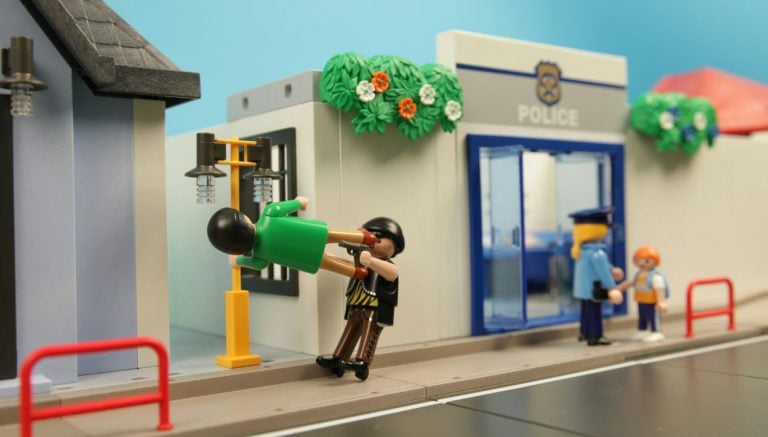Imagine que es un cliente fiel de una empresa de software líder. Lleva años utilizando sus productos, pero hace poco se encontró con un problema técnico que le dejó frustrado y sin saber a quién acudir. ¿Lo sabe?
- A) ¿Ponerse en contacto con el servicio de atención al cliente de la empresa, con la esperanza de que puedan resolver rápidamente su problema?
- B) Ponerse en contacto con un gestor dedicado al éxito del cliente que dedique tiempo a comprender sus objetivos empresariales más amplios y trabaje con usted para garantizar que se satisfacen sus necesidades...
La distinción entre estos dos escenarios puede parecer sutil, pero representa una diferencia fundamental en la forma en que las organizaciones abordan las relaciones con los clientes. Servicio al cliente y éxito del cliente: dos términos que a menudo se utilizan indistintamente pero que describen filosofías y enfoques muy diferentes.
En esta guía, aclararemos estos matices y te prepararemos para cultivar una verdadera... Organización SaaS centrada en el clienteCon este conocimiento, descubrirá las claves para fomentar una lealtad del cliente incomparable e impulsar un crecimiento sostenible.
¿Qué es el Servicio de Atención al Cliente?
El servicio de atención al cliente es la columna vertebral de cualquier empresa de éxito, ya que proporciona el apoyo y la asistencia esenciales que los clientes necesitan cuando utilizan los productos o servicios de una empresa. En esencia, el servicio de atención al cliente se define como la asistencia y el asesoramiento que presta una empresa a las personas que compran o utilizan sus ofertas.
Principales responsabilidades de los equipos de Atención al Cliente
Los equipos de atención al cliente tienen muchas responsabilidades, pero las principales suelen ser:
- Responder a las consultas y reclamaciones de los clientes: Esto incluye responder a preguntas sobre productos o servicios, tratar los problemas con rapidez y profesionalidady trabajar para encontrar soluciones que hagan que el cliente se sienta escuchado y valorado.
- Solución y resolución de problemas: Los representantes de atención al cliente actúan como detectives, identificando la causa de los problemas de los clientes y aplicando soluciones eficaces.
- Facilitar información sobre productos y servicios: Proporcionar a los clientes los conocimientos que necesitan para tomar decisiones informadas y sacar el máximo partido de lo que compran es una responsabilidad clave de los equipos de atención al cliente. Esto puede implicar explicar las características del producto, ofrecer consejos de uso o dirigir a los clientes a los recursos pertinentes.
- Tramitación de pedidos y devoluciones: Garantizar el cumplimiento de los pedidos y gestionar las devoluciones de forma eficiente suelen formar parte de la estrategia de la empresa. experiencia en atención al cliente.
El servicio de atención al cliente reacciona a los problemas a medida que surgen, en lugar de anticiparlos y prevenirlos. Métricas como la satisfacción del cliente (CSAT), la puntuación neta del promotor (NPS), el tiempo de respuesta y el tiempo de resolución de problemas miden el éxito.
Estos equipos son vitales para mantener a los clientes fieles y contentos, conservar la reputación de la marca y garantizar experiencias positivas. Pero el éxito del cliente, como veremos, adopta un enfoque diferente a la hora de apoyar e involucrar a los clientes.

Su compañero de atención al cliente
ThriveDesk, su compañero de confianza para la excelencia en la atención al cliente. Mejore sus capacidades de asistencia sin esfuerzo. Únase ahora para conseguir interacciones perfectas.
Ventajas del servicio de atención al cliente
Un servicio de atención al cliente eficaz y con capacidad de respuesta ofrece varias ventajas:
- Mejora de la satisfacción y la fidelidad de los clientes: Los equipos de atención al cliente aumentan la satisfacción resolviendo rápidamente los problemas y ofreciendo un apoyo empático. Los clientes satisfechos son más propensos a permanecer fieles y pueden defender la marca. Sus experiencias positivas contribuyen al crecimiento y la reputación de la empresa.
- Reducción de la frustración y la pérdida de clientes: Los problemas no resueltos o los largos tiempos de espera pueden provocar una gran frustración en los clientes y, en última instancia, la pérdida de clientes, que buscan soluciones alternativas. Atención al cliente eficazSin embargo, puede evitar estas consecuencias negativas abordando los problemas con eficacia y mitigando el riesgo de que los clientes insatisfechos abandonen la marca.
- Aumento de la confianza de los clientes: El apoyo constante del equipo de atención al cliente genera confianza en la marca. Esta confianza conduce a relaciones más sólidas y a la repetición del negocio. Los clientes también están más dispuestos a probar nuevos productos o servicios.
- Un valioso bucle de retroalimentación para el desarrollo de productos: Las interacciones del servicio de atención al cliente ofrecen información sobre las necesidades y los puntos débiles de los clientes. Compartir esta información con el equipo de desarrollo de productos impulsa mejoras continuas. Garantiza que los productos satisfagan mejor las necesidades cambiantes de los clientes.
El servicio de atención al cliente actúa como primera línea de defensa, garantizando una experiencia fluida del cliente y atendiendo sus preocupaciones inmediatas. Es una función crítica que trabaja mano a mano con el éxito del cliente para cultivar relaciones a largo plazo con los clientes.
¿Qué es el éxito de los clientes?
Mientras que el servicio de atención al cliente se centra en abordar problemas y consultas inmediatas, la disciplina del éxito del cliente adopta un enfoque más proactivo y estratégico para brindar apoyo a los clientes. éxito de los clientes Se define como la función dentro de una empresa que garantiza que los clientes logren los resultados deseados al utilizar los productos o servicios de la empresa.
Principales responsabilidades de los equipos de éxito de clientes
Los equipos de éxito del cliente adoptan un enfoque proactivo, centrándose en lo siguiente:
- Promoción proactiva y establecimiento de relaciones: Construir relaciones sólidas es clave. Los gestores del éxito de los clientes se ponen en contacto con ellos de forma proactiva, comprenden sus necesidades y se convierten en asesores de confianza.
- Identificar y atender las necesidades de los clientes: Más allá de lo que se solicita explícitamente, los equipos de éxito del cliente se anticipan a sus necesidades y ofrecen soluciones o recursos de forma proactiva.
- Proporcionar orientación estratégica y apoyo consultivo: Los gestores del éxito de los clientes actúan como consultores, ofreciendo asesoramiento estratégico y mejores prácticas adaptados a los objetivos y retos específicos de cada cliente.
- Garantizar el éxito global del cliente y la consecución de sus objetivos: En última instancia, los equipos de éxito del cliente se miden por su capacidad para ayudar a los clientes a lograr los resultados deseados. Esto puede implicar un aumento de las ventas, una mejora de la eficiencia o la consecución de objetivos empresariales específicos.
Los equipos de éxito del cliente se diferencian del servicio de atención al cliente por su enfoque proactivo. Consiga una estrategia eficaz Estrategia de servicio al cliente en redes sociales Puede conservar a sus clientes durante mucho tiempo. En lugar de esperar a que surjan problemas, monitorean la salud y la interacción de los clientes, anticipándose a las necesidades y ofreciendo ayuda oportuna.
Utilizan métricas como la retención y la expansión de clientes, dando prioridad a las relaciones a largo plazo y a la entrega de valor. Este enfoque garantiza no sólo la fidelidad, sino también impulsar el crecimiento de los clientes y los resultados deseados.
Los profesionales del éxito del cliente tienen como objetivo el crecimiento del cliente y los resultados deseados, lo que contrasta con el enfoque de resolución de problemas inmediatos del servicio de atención al cliente. Ambas disciplinas se complementan y son cruciales para una experiencia integral del cliente.

¿Aún no está convencido?
Estamos encantados de que experimente ThriveDesk. Durante los próximos 14 días, si ThriveDesk no es lo que necesita, ¡simplemente póngase en contacto con nosotros! Estaremos encantados de devolverle 100% de su dinero. Sin preguntas. ¿A qué está esperando?
No se requiere tarjeta de crédito
Ventajas del éxito de los clientes
Al invertir en el éxito de los clientes, las empresas pueden cosechar multitud de beneficios:
- Aumento de la retención de clientes y del valor vitalicio: Los clientes satisfechos que consiguen los resultados deseados tienden a fidelizarse y a continuar con el negocio a largo plazo. Esto aumenta el valor del ciclo de vida del cliente (LTV), ya que amplían el uso del producto. Invertir en el éxito del cliente es estratégico, ya que retener a los clientes existentes es más rentable que captar nuevos.
- Mejora de la satisfacción y la defensa del cliente: Cuando los clientes sienten que una empresa está realmente interesada en su éxito, quedan muy satisfechos. Es más probable que estos clientes satisfechos se conviertan en defensores de la marca, difundiendo un boca a boca positivo y referencias que pueden atraer nuevos negocios. Fuerte satisfacción y defensa del cliente reforzar aún más la reputación de la empresa y su posicionamiento competitivo.
- Reducción de la rotación y de los tickets de soporte: Al supervisar proactivamente la salud del cliente y abordar los problemas antes de que se agraven, los equipos de éxito del cliente pueden reducir la probabilidad de que los clientes o la presentación de solicitudes de asistencia. Esto no sólo mejora la experiencia general del cliente, sino que también alivia la carga de los recursos de atención al cliente de la empresa, permitiéndoles operar con mayor eficacia.
- Aumento de las oportunidades de venta cruzada: Los equipos de éxito del cliente aprovechan su conocimiento de las necesidades del cliente para detectar nuevas oportunidades de uso. Recomendar complementos o actualizaciones impulsa el crecimiento de los ingresos y refuerza la confianza en las soluciones de la empresa. Esto profundiza la relación cliente-empresa y mejora la satisfacción general.
El éxito del cliente va más allá del servicio básico al cliente. Se trata de un enfoque estratégico para crear relaciones duraderas con los clientes que impulsen el crecimiento y la rentabilidad de la empresa.
8 diferencias clave entre el éxito de los clientes y el servicio de atención al cliente
Aunque tanto el éxito del cliente como el servicio de atención al cliente son cruciales para la satisfacción y retención del cliente, difieren en su enfoque, objetivos, conjunto de habilidades e impacto general en el recorrido del cliente. He aquí una tabla que resume las principales diferencias:
| Características | Éxito de los clientes | Atención al cliente | Explicación de las principales diferencias |
|---|---|---|---|
| Acérquese a | Proactivo | Reactivo | El éxito del cliente adopta una postura proactiva, anticipándose a las necesidades del cliente y abordándolas de forma proactiva. El servicio de atención al cliente es reactivo y responde a los problemas y consultas a medida que surgen. |
| Objetivo | Ayude a los clientes a alcanzar sus objetivos con sus productos/servicios | Resolver los problemas y consultas de los clientes | El objetivo principal del éxito del cliente es garantizar que los clientes consigan los resultados deseados con su producto/servicio. El servicio de atención al cliente se centra en resolver problemas y consultas específicas con rapidez y eficacia. |
| Métricas | Tasa de retención, valor vitalicio, tasa de expansión | Tiempo de resolución, CSAT (Customer Satisfaction Score), FRT (First Response Time) | Los equipos de éxito del cliente realizan un seguimiento de las métricas que reflejan la salud del cliente a largo plazo, como la tasa de retención, el valor vitalicio y la tasa de expansión. El servicio de atención al cliente se centra en métricas que miden la satisfacción y la resolución inmediatas, como el tiempo de resolución, el CSAT (índice de satisfacción del cliente) y el FRT (tiempo de primera respuesta). |
| Competencias | Consultoría estratégica, perspicacia empresarial, experiencia en el recorrido del cliente | Conocimientos técnicos, resolución de problemas, capacidad de comunicación | Los profesionales del éxito del cliente necesitan aptitudes de consultoría estratégica, perspicacia empresarial y un profundo conocimiento de la trayectoria del cliente. Los representantes de atención al cliente necesitan sólidos conocimientos técnicos, capacidad de resolución de problemas y excelentes dotes de comunicación. |
| Actividades típicas | Incorporación y formación, comprobaciones, análisis de adopción de funciones, orientación estratégica | Resolución de problemas, respuesta a preguntas, tramitación de tickets, gestión de reclamaciones | Los representantes de éxito del cliente se centran en actividades que impulsan el éxito del cliente a largo plazo, como la incorporación y la formación, las comprobaciones de estado, el análisis de adopción de funciones y la orientación estratégica. Los representantes de atención al cliente se encargan de solucionar problemas, responder preguntas, procesar tickets y gestionar las quejas de los clientes. |
| Enfoque relacional | Asociación estratégica a largo plazo | Transaccional, resolución inmediata | El éxito del cliente crea asociaciones estratégicas a largo plazo con los clientes, fomentando un entorno de colaboración. Las interacciones del servicio de atención al cliente son más transaccionales y se centran en la resolución inmediata de los problemas de los clientes. |
| Estilo de comunicación | Consulta y colaboración | Informativa, empática | La comunicación para el éxito del cliente es consultiva y colaborativa, trabajando con los clientes para alcanzar sus objetivos. La comunicación del servicio de atención al cliente es informativa y empática, y garantiza que los clientes comprendan las soluciones disponibles. |
| Herramientas y tecnologías | CRM, plataformas de éxito del cliente, cuadro de mando analítico | Sistemas de tickets, software de base de conocimientos | Los equipos de éxito del cliente aprovechan los sistemas CRM, las plataformas de éxito del cliente y los paneles de análisis para realizar un seguimiento de la salud del cliente e identificar posibles problemas. Los equipos de atención al cliente utilizan sistemas de tickets, software de base de conocimientos y otras herramientas para agilizar la resolución de problemas y mejorar la comunicación. |
Al comprender estas diferencias, las empresas pueden aprovechar eficazmente tanto el éxito del cliente como el servicio de atención al cliente para crear una experiencia del cliente fluida y positiva que fomente la fidelidad y el crecimiento del cliente a largo plazo.
Trabajar juntos: Colaboración para el éxito de los clientes y el servicio de atención al cliente

Aunque el éxito del cliente y el servicio al cliente tienen papeles distintos, no son funciones aisladas. De hecho, su colaboración es fundamental para crear una experiencia del cliente unificada y positiva. A continuación se explica por qué es esencial una comunicación fluida y el trabajo en equipo entre estos equipos:
Objetivo compartido de retención y crecimiento de la clientela
En última instancia, tanto el éxito del cliente como el servicio de atención al cliente comparten el objetivo común de retener a los clientes e impulsar el crecimiento empresarial a largo plazo. Al trabajar juntos en pos de este objetivo compartido, pueden abordar las necesidades y los retos de los clientes con mayor eficacia, creando un ciclo de vida del cliente más sostenible.
Mejora de la experiencia del cliente
Un enfoque en silos, en el que el servicio al cliente y el éxito del cliente operan de forma aislada, puede conducir a un viaje del cliente fragmentado e inconexo. La colaboración garantiza una transición fluida desde el punto de contacto inicial, a través de incorporación y asistencia continuay hasta las posibles oportunidades de venta cruzada y de ventas adicionales. Esta experiencia cohesiva genera confianza y fidelidad.
Intercambio de datos e información
Los equipos de éxito del cliente obtienen información muy valiosa de las interacciones con los clientes gestionadas por el equipo de atención al cliente. Al compartir estos datos y comentarios, los equipos de éxito del cliente pueden comprender mejor los retos específicos y los puntos débiles a los que se enfrentan los clientes, lo que les permite abordar de forma proactiva los posibles problemas antes de que se agraven.
Escalada e intervención
En algunos casos, el equipo de atención al cliente puede encontrarse con problemas o retos complejos que requieren una intervención estratégica y soluciones personalizadas. Un traspaso fluido al equipo de éxito del cliente permite un análisis más profundo, identificación de la causa raízy la aplicación de soluciones a medida para evitar futuros problemas.
Voz y experiencia de marca unificadas
Cuando los equipos de atención al cliente y éxito del cliente trabajan en armonía, se fomenta una voz unificada y una experiencia de marca para el cliente en todos los puntos de contacto. Esta coherencia en la comunicación y la resolución de problemas refuerza la promesa de marca de la empresa y genera una confianza duradera con los clientes.
He aquí algunas estrategias para mejorar la colaboración entre el éxito del cliente y el servicio al cliente:
- Comunicación periódica e intercambio de información: Establezca canales de comunicación periódica para compartir las opiniones de los clientes, las mejores prácticas y los posibles obstáculos.
- Sesiones conjuntas de formación: Organice sesiones de formación en las que ambos equipos conozcan las funciones del otro y comprendan su papel en el recorrido del cliente.
- Métricas e informes compartidos: Alinearse en métricas clave que midan el éxito y la satisfacción del cliente. Utilizar paneles de información para hacer un seguimiento de los avances e identificar las áreas susceptibles de mejora.
- Acuerdos de nivel de servicio (SLA): Establecer acuerdos de nivel de servicio claros sobre la forma en que se tratarán las cuestiones planteadas entre los equipos, garantizando una intervención y resolución oportunas.
- Invierta en herramientas de colaboración: Utilizar plataformas tecnológicas que faciliten la comunicación fluida, el intercambio de datos y la gestión conjunta de casos entre los equipos de éxito del cliente y de atención al cliente.
Al fomentar un entorno de colaboración, el éxito del cliente y el servicio al cliente pueden trabajar juntos para crear una experiencia centrada en el cliente que impulse la fidelidad, la retención y el éxito empresarial a largo plazo.
¿Y ahora qué?
El éxito del cliente y el servicio al cliente, aunque distintos en cuanto a planteamiento y enfoque, son ambos ingredientes esenciales para crear una base de clientes leal y próspera.
Éxito de los clientes adopta un enfoque proactivo, asegurándose de que los clientes alcanzan sus objetivos con su producto o servicio. Atención al cliente, por otra parte, desempeña un papel reactivo, resolviendo eficazmente los problemas y consultas de los clientes.
Comprendiendo estas diferencias y fomentando la colaboración entre ambos equipos, las empresas pueden crear una experiencia de cliente fluida y positiva a lo largo de todo el recorrido.





